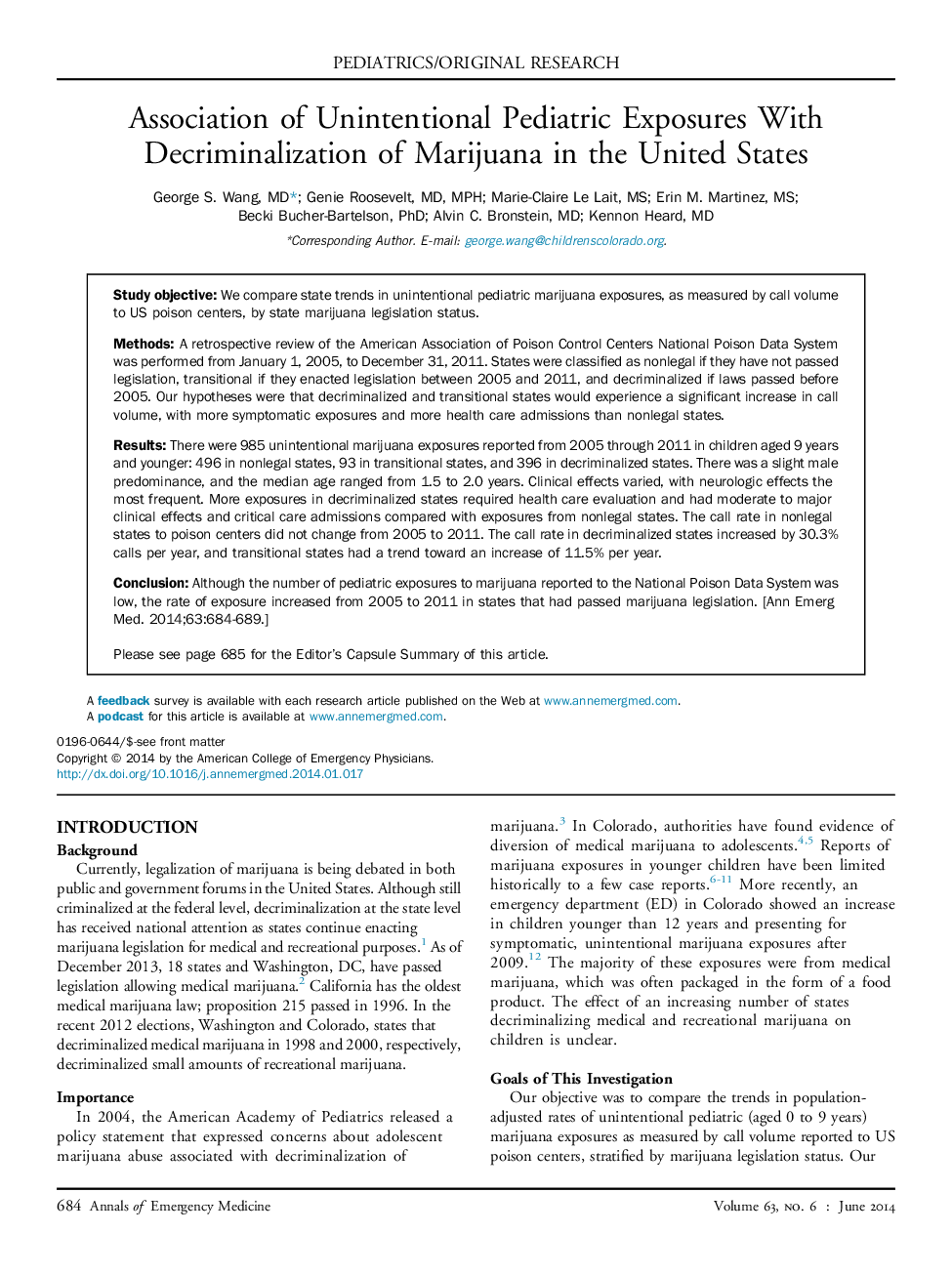| Article ID | Journal | Published Year | Pages | File Type |
|---|---|---|---|---|
| 6081068 | Annals of Emergency Medicine | 2014 | 6 Pages |
Study objectiveWe compare state trends in unintentional pediatric marijuana exposures, as measured by call volume to US poison centers, by state marijuana legislation status.MethodsA retrospective review of the American Association of Poison Control Centers National Poison Data System was performed from January 1, 2005, to December 31, 2011. States were classified as nonlegal if they have not passed legislation, transitional if they enacted legislation between 2005 and 2011, and decriminalized if laws passed before 2005. Our hypotheses were that decriminalized and transitional states would experience a significant increase in call volume, with more symptomatic exposures and more health care admissions than nonlegal states.ResultsThere were 985 unintentional marijuana exposures reported from 2005 through 2011 in children aged 9 years and younger: 496 in nonlegal states, 93 in transitional states, and 396 in decriminalized states. There was a slight male predominance, and the median age ranged from 1.5 to 2.0 years. Clinical effects varied, with neurologic effects the most frequent. More exposures in decriminalized states required health care evaluation and had moderate to major clinical effects and critical care admissions compared with exposures from nonlegal states. The call rate in nonlegal states to poison centers did not change from 2005 to 2011. The call rate in decriminalized states increased by 30.3% calls per year, and transitional states had a trend toward an increase of 11.5% per year.ConclusionAlthough the number of pediatric exposures to marijuana reported to the National Poison Data System was low, the rate of exposure increased from 2005 to 2011 in states that had passed marijuana legislation.
